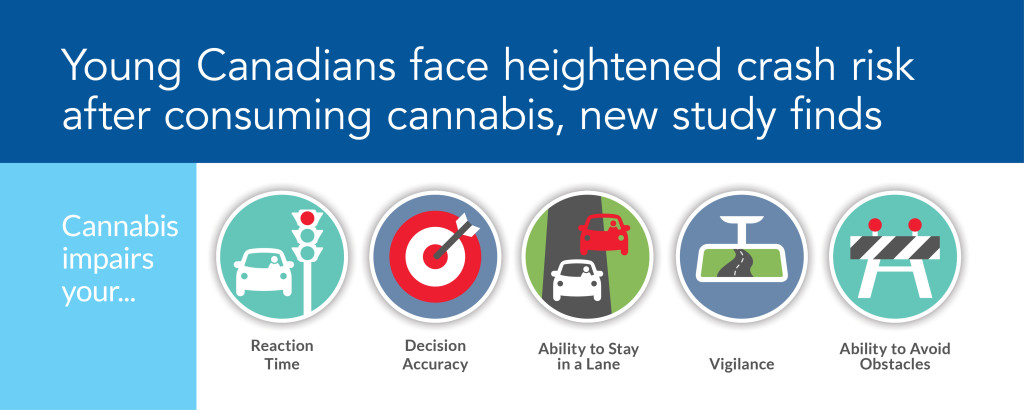CAA's New National Campaign
Cannabis-impaired driving is still a big issue on Canadian roads, according to new public opinion research by CAA. To help combat it, CAA has launched a national campaign urging Canadians to plan a safe ride home if they're going to consume cannabis edibles. Read the November 26th news release here.
The Dangers of Driving High
Driving under the influence of cannabis is drug-impaired driving. Under Canada’s Criminal Code, driving any motorized vehicle on public or private property after cannabis use is illegal— whether it’s a car on a highway or an ATV in your own backyard. Even a small amount increases the likelihood of a crash. Research by McGill University funded by CAA found that cannabis slows down reaction time, reduces concentration, impacts the ability to stay in a lane, and affects the accuracy of decision-making behind the wheel. The study also found that young drivers were at risk of a collision even five hours after inhaling cannabis.

The Impact of Edibles
CAA’s Ian Jack’s current concern is cannabis edibles— consumable products infused with cannabis. When smoked or inhaled, cannabis takes effect quickly. In contrast, edibles can take hours to kick in, and early research shows they impact individuals very differently. “Some people have a brownie, and they’re on the floor,” Jack explains. “For other people, there’s barely a buzz.” But many Canadians aren’t aware of these key differences. “Our concern is that someone who does consume an edible doesn’t feel anything, then decides to go pick up their groceries and becomes impaired on the road,” he says.
Responsible Cannabis Use
So, how long should you wait to drive after using cannabis? Unfortunately, there’s no clear-cut answer yet. The effects of cannabis vary depending on the method of consumption, the quantity consumed, the variety of cannabis used, and the reaction of the person using it. So more research is needed before there’s definitive guidance on safe use. Though studies are now underway, the onus is on individuals to use cannabis responsibly. CAA recommends avoiding driving after using cannabis entirely. Instead, plan ahead: Arrange a designated driver, call a taxi or rideshare, or spend the night.